Things to do in Haiti in a 1-week itinerary
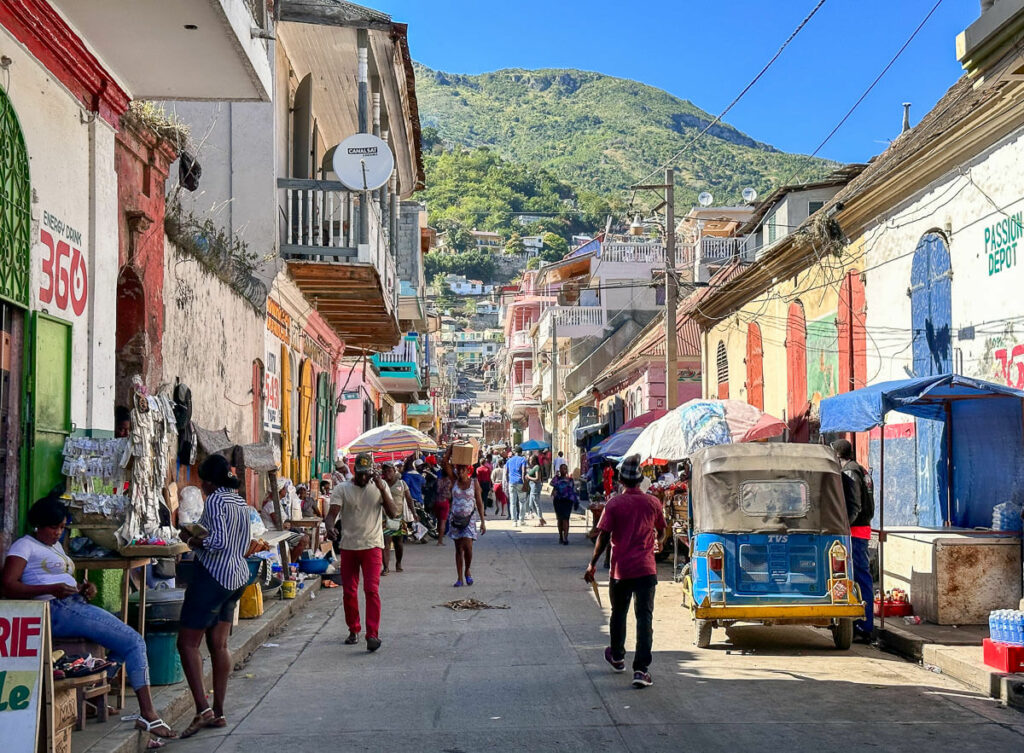
Dreamy landscapes and beaches, world-class architectural delights and the most authentic West African culture in the heart of the Caribbean.
Few travelers know about any of the places to visit in Haiti, yet this is truly the most unique destination in the Americas, packed with exciting sites offering thrilling backpacking adventures.
After spending 10 traveling around the country, here’s a comprehensive 7-day, safe itinerary containing the best things to see and do in Haiti.
For all practical information including visas, safety, local culture, etc., check our travel guide to Haiti.
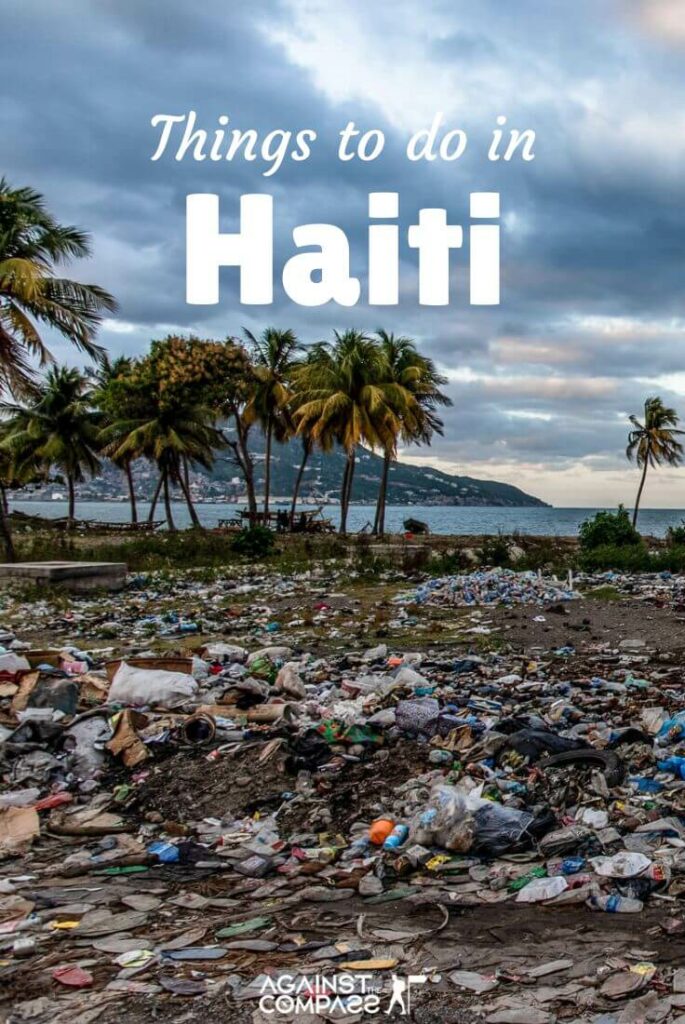
In this Haiti itinerary, you will find:
Table of Contents
our recommended travel insurance for Haiti
IATI Insurance is one of the very few that covers travel in Haiti.
🏨 Accommodation: where to stay at the places you visit in Haiti
Where to stay in Santo Domingo
Near the station for buses to Haiti: Torres Apart Studio
Although this place is nothing special, it’s relatively well-priced and ideally located next to the bus terminal for buses going to Haiti.
In the Zona Colonial, near tourist sites: La Puerta Roja Guest House
Cheap, and very well located. This beautiful guest house is an excellent place to stay.
Where to stay in Cap-Haïtien: Habitation des Lauriers
This is the best place to stay in Cap-Haïtien. The rooms are basic and a bit expensive, but that’s what you always get in Haiti, and this accommodation offers the added benefit of having staff who speak English. You can also pay by card and exchange money.
The views are amazing too, overlooking Cap-Haïtien.
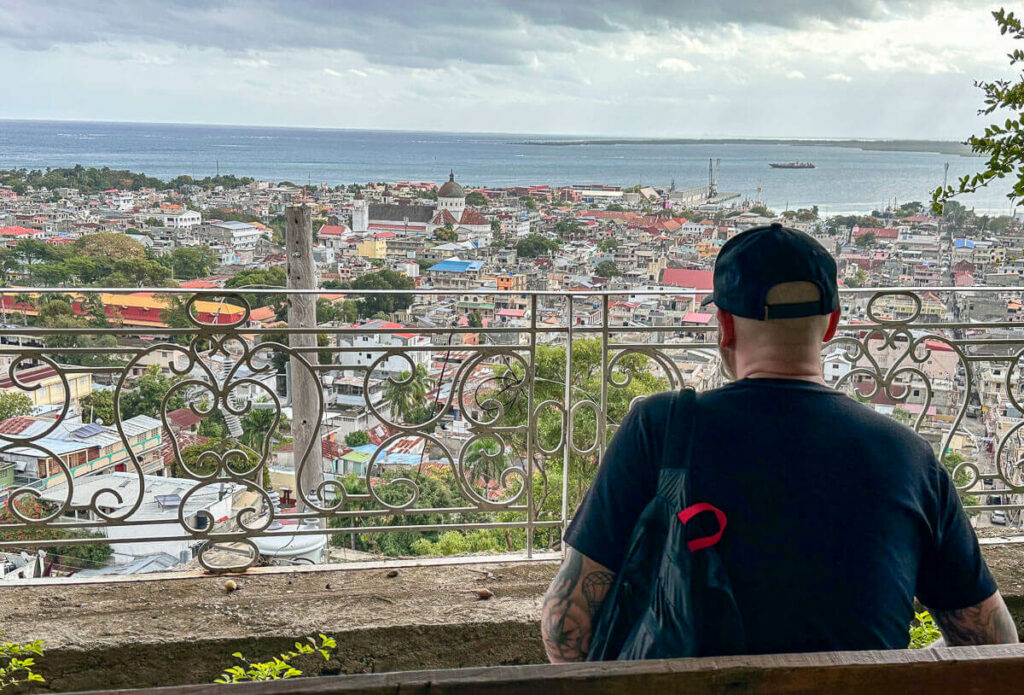
Where to stay in Port-au-Prince: Allamanda Hotel
Pétionville is the safest area in the capital, and the only place where you should book a hotel.
This one is one of the best choices in town.
🛖 Things to do with Haiti in a 7-day itinerary
Here’s everything you can visit in Haiti in 1 week.
Map of things to do in Haiti
Day 1 – Traveling from Santo Domingo to Cap-Haïtien
I overlanded into Haiti from Dominican Republic and that’s what most travelers do, so our Haiti itinerary will focus on this area.
In any case, remember that both Port-au-Prince and Cap-Haïtien have an international airport with connections to different cities in the USA – especially Miami – but flights tend to be more expensive than any flight into Santo Domingo.
The best way to travel from Dominican Republic to Haiti is by taking the direct bus that runs from Santo Domingo to Cap-Haïtien via Santiago de los Caballeros.
A bus also goes to Port-au-Prince, but this Haiti travel itinerary will instead focus on the other route.
Step 1: Head to the bus terminal at least one day before your intended date of departure
The bus company going to Haiti is called Caribbean Tours, and the terminal is located here.
Buses to Cap-Haïtien depart in the morning, between 7am and 8:30am.
Tickets do sell out, so try to get there at least one day before to book your ticket and find out the actual time of departure.
A one-way ticket costs 30-35 USD. This can be paid in Dominican Pesos too.
Step 2: On the day of departure, go to the terminal to catch the bus and pay the respective border fees
To exit Dominican Republic by land, some border fees apply and you must pay these before boarding the bus.
Border fees cost 37 USD, and must be paid in USD.
If you don’t have US dollars on you, there’s a money exchange office on the first floor of the bus terminal, where they will exchange your Dominican Pesos into USD at a pretty fair rate.
Note that the office will most likely be closed by the time you get there, so make sure to buy your $ the day before.
The bus journey officially takes 7 – 8 hours although it can easily take up to 12. Factors for potential delays include border crossing mishaps, but also bus breakdowns.
The bus has a pretty long stopover in a city called Santiago de los Caballeros.
They do also serve a meal on board consisting of Dominican-style grilled meat and rice, which I found to be particularly awful.


Step 3: Dominican Republic-Haiti border crossing
The border is a bit chaotic but there’s an attendant/tour leader on the bus who will probably guide you through, including paying the mentioned border fees.
On the Haitian side, some locals will offer to help you with filling out the forms – looking for a tip – but just ignore them.
Step 4 – Arriving in Cap-Haïtien
The bus will drop you at this terminal.
I arrived at around 7pm, when it was already dark. Actually, it was really dark, since the street lights weren’t on, which happens pretty much all over Haiti.
At the station, you’ll find plenty of motorbike taxis but the hotel I stayed at, Habitation des Lauriers, is just 1.7km from here, so I decided to walk.
Day 2 – Exploring Cap-Haïtien
Cap Haïtien is the second most important city after Port-au-Prince, housing the top tourist attractions in all Haiti.
Furthermore, from a historical perspective, the area is far more significant than the capital, for the following reasons:
- It was here in Cap-Haïtien – in Bord de Mer de Limonade, just outside of the city – where Colombus built the first settlement ever in the New World.
- The area was the epicentre of the slaves’ revolt against their French overlords.
- Cap Haïtien served as the French headquarters during colonial rule.
From the Habitation des Lauriers hotel, you get the best views of the city’s skyline, so there isn’t a better place to start your day.
Other than that, Cap-Haïtien is a pleasant city to walk around while checking out some pretty cool local markets and old colonial French architecture.
Things to do in Cap-Haïtien
Place d’Armes & Notre Dame Cathedral: the central square with its respective cathedral, colonial buildings and gingerbread houses.
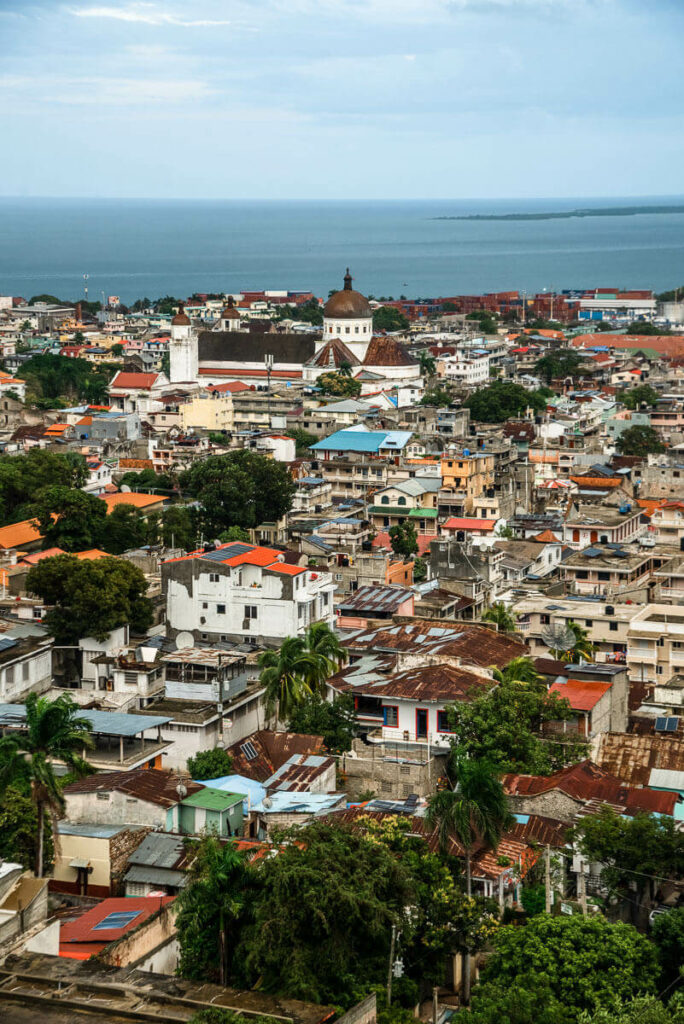
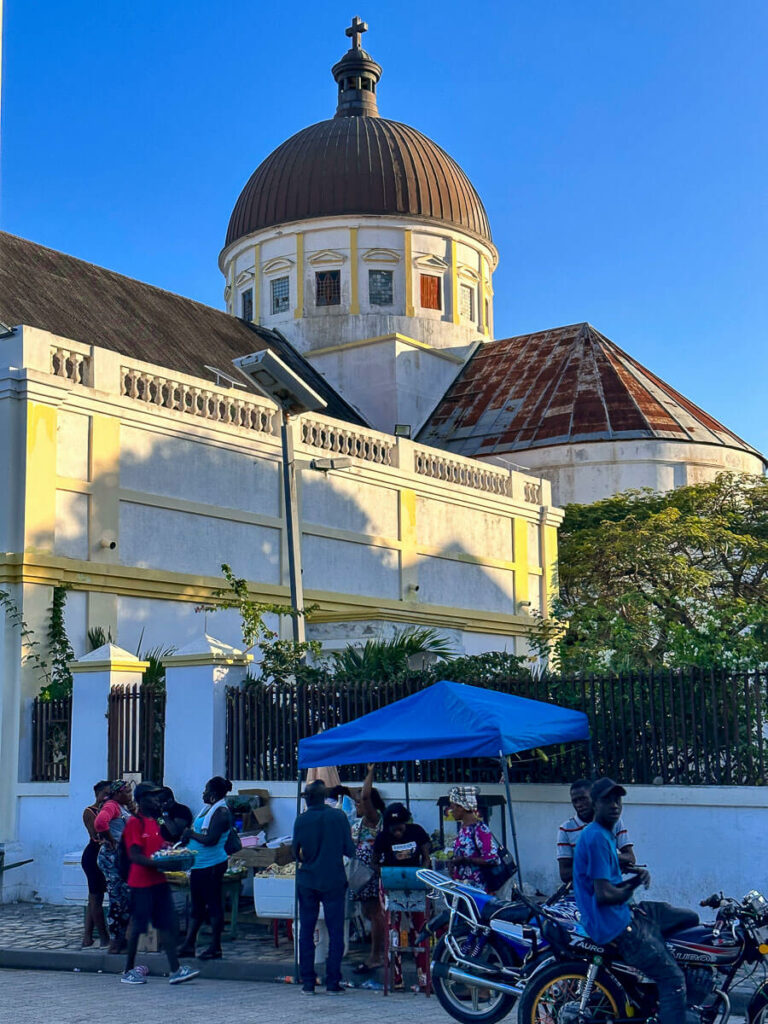
Iron Market: East of Place d’Armes, the Iron Market covers several streets of the city grid. It’s a bustling, fascinating market, something you won’t see anywhere else in the Americas, and very similar to local markets in West Africa.
Around Place de la Résistance: This is a pretty random place that won’t be mentioned in any guidebooks, but at the entrance to the city, just before reaching the bridge, there’s a huge outdoor market, one that tourists never see and the best place in Haiti for people-watching. This market is located almost right on the beach, and it reflects the typical images we see of Haiti on the news: absolutely massive piles of rubbisha being dragged away by the ocean waves.

Half-day trip from Cap-Haïtien: Bois Caïman
Bois Caïman is one of the most important places in Haiti.
On 14th August 1791, a group of black slaves from the sugar plantations of Cap-Haïtien and nearby areas gathered at a site called Bois Caïman to perform a Vodou ceremony, while also planning a mass uprising that quickly turned into the Haitian Revolution which freed the country from its French overlords.
Bois Caïman is located 10km from Cap-Haïtien.
How to visit Bois Caïman
If you want to do it the backpacking – hard – way, first take a tap tap towards Vaudreuil. From there, it’s a 2km walk to the actual village, but you can also catch a taxi motorbike.
In the village, there’s a painting and memorial of the Haitian Revolution and you can visit the actual cave where the Vodou ceremony took place, and where rituals are still held.
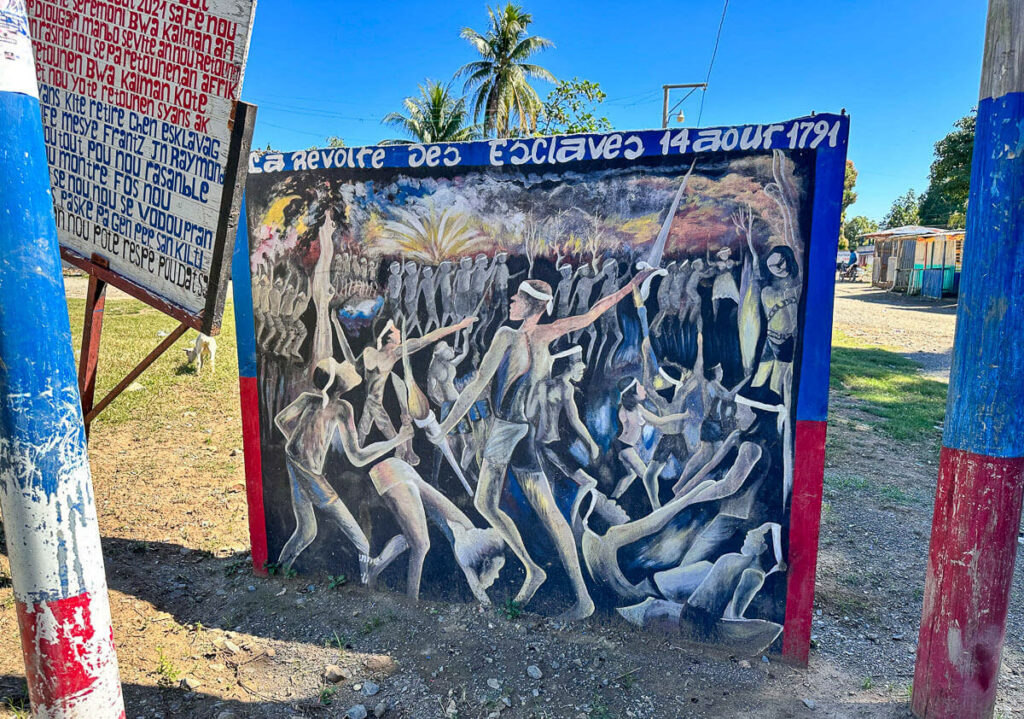
Day 3 – Day trip to Citadelle la Ferrière
In my opinion, Citadelle la Ferrière is the most beautiful place to visit in Haiti.
Less than 20km from Cap Haïtien, there’s a place called Milot, a rural town home to an absolutely astonishing fortress built on top of a mountain with superb views of the mountains around the region.
This is the largest fortress in the whole American continent, and a symbol of Haiti’s independence, built by black slaves who had gained their freedom – the first of its kind – and the reason Citadelle la Ferrière is today a UNESCO World Heritage site, and the most famous place to visit in Haiti.
It was built in the 19th century, commissioned by Haitian revolutionary Henri Christophe, and aiming to at thwart potential French invasions.
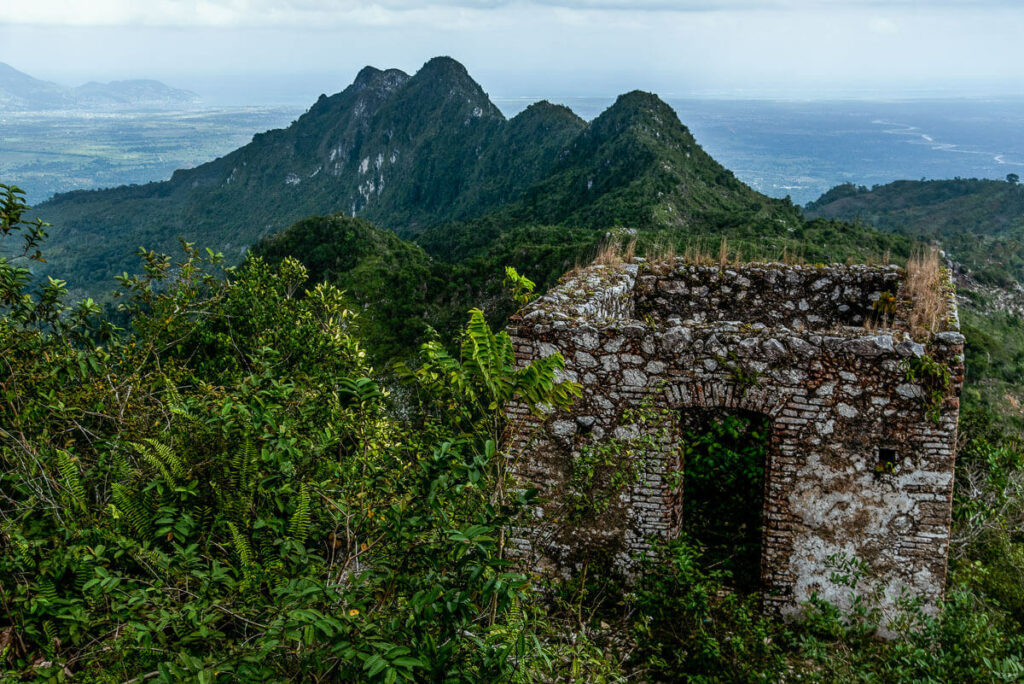
How to get to Citadelle la Ferrière
1 – Take a tap tap to Milot
The tap tap station for Milot is located here.
It costs around 100 Gourdes per person.
2 – Arriving in Milot and ticket office
Upon arriving in Milot, you will be approached by particularly intense young men on their motorbikes wanting to take you up to the Citadel. They won’t leave you alone.
The ticket office for going up to the fortress is 10-15 minutes away from the tap tap drop-off point.
The guys on the motorbikes will most likely follow you all the way there, insisting on taking you to the top.
The entrance fee to the Citadel is 1000 Gourdes.
3 – Going up to the Citadel.
Going to the top of the Citadel on foot is possible, but it would take a few hours.
Instead, you can hire someone to take you there on a motorbike, and a round-trip ticket should cost no more than 1000 Gourdes but you’ll probably have to bargain a bit.
Motorbikes can’t make it all the way to the top, so the last 1 or 2 kilometres must be done on foot. Lazier travelers can opt to ride a horse too.
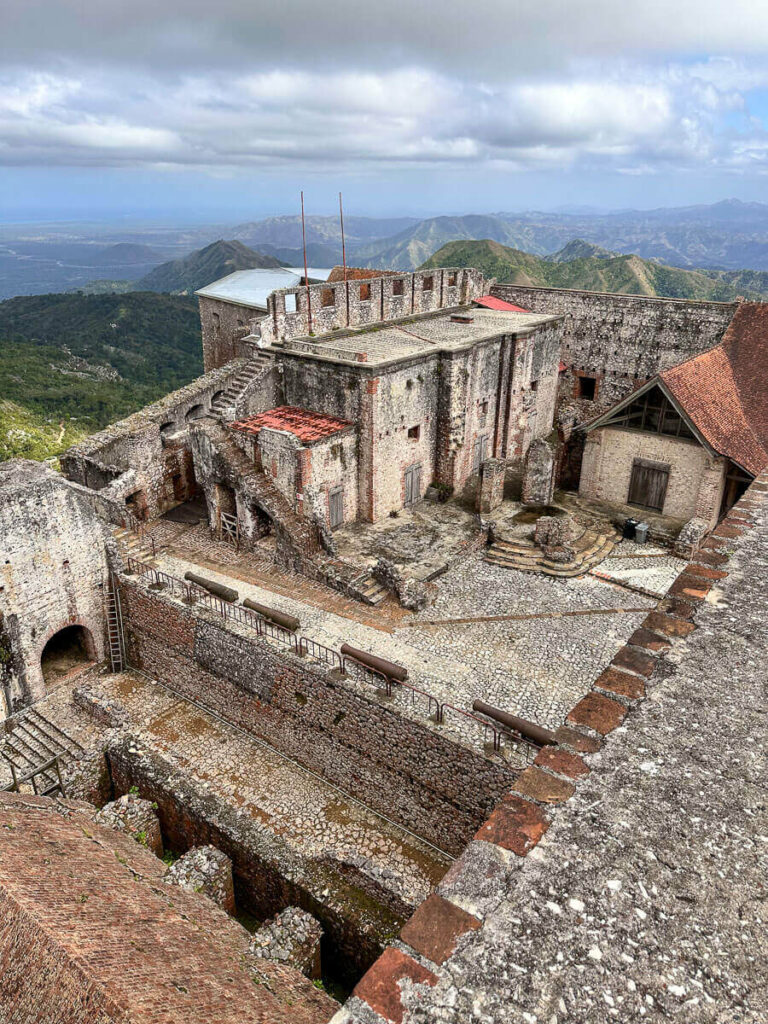
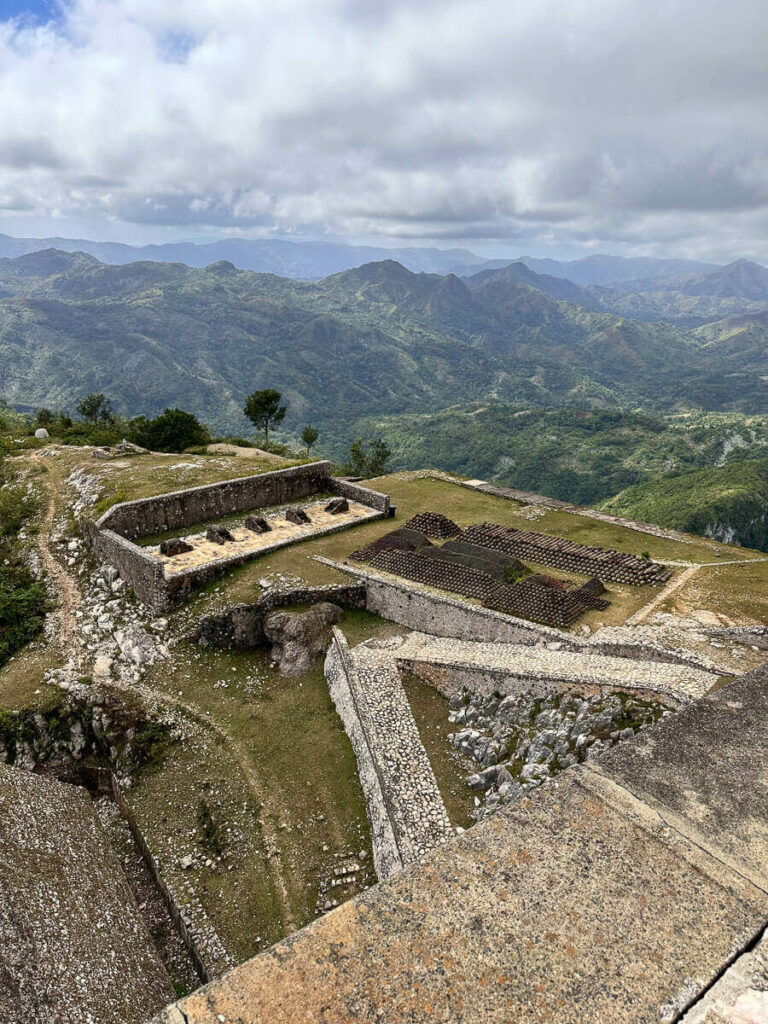
Day 4 – Hiking to Labadee
Many travelers agree that Labadee is the most beautiful place to visit in Haiti.
Labadee is the bit of coast west of Cap-Haïtien, on the other side of the small peninsula.
This is the best stretch of coast in the country, not only for its white-sand beaches and crystal-clear waters, but also because it’s impeccably clean and plastic-free, something hard to find in Haiti.
Labadee is in fact a pretty laid back settlement, more notably known for being home to a tourist resort named after the village.
This resort is an essential part of the itinerary for many Caribbean cruises sailing past the islands.
But don’t worry, the resort is a bit far from the village and nobody is allowed to enter unless they are a cruise passenger. Moreover, cruise passengers are either not interested in leaving the resort or they just think it’s too dangerous.
Actually, you won’t even notice there’s a resort here unless you climb one of the hills or come from Cap-Haïtien on foot.
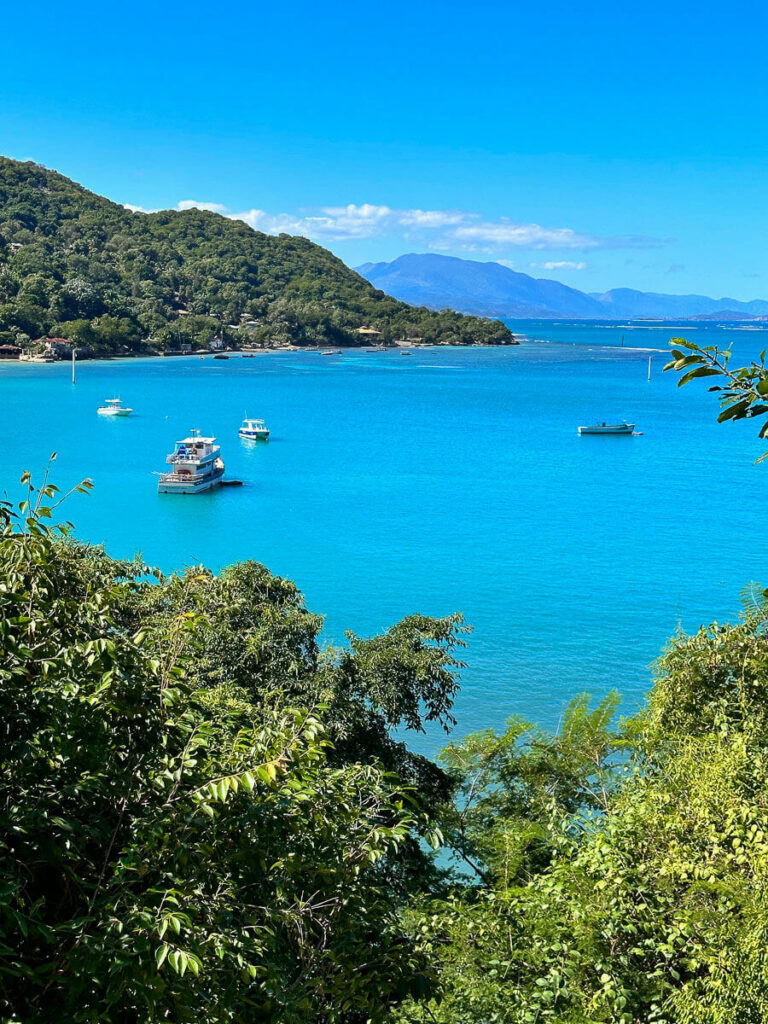
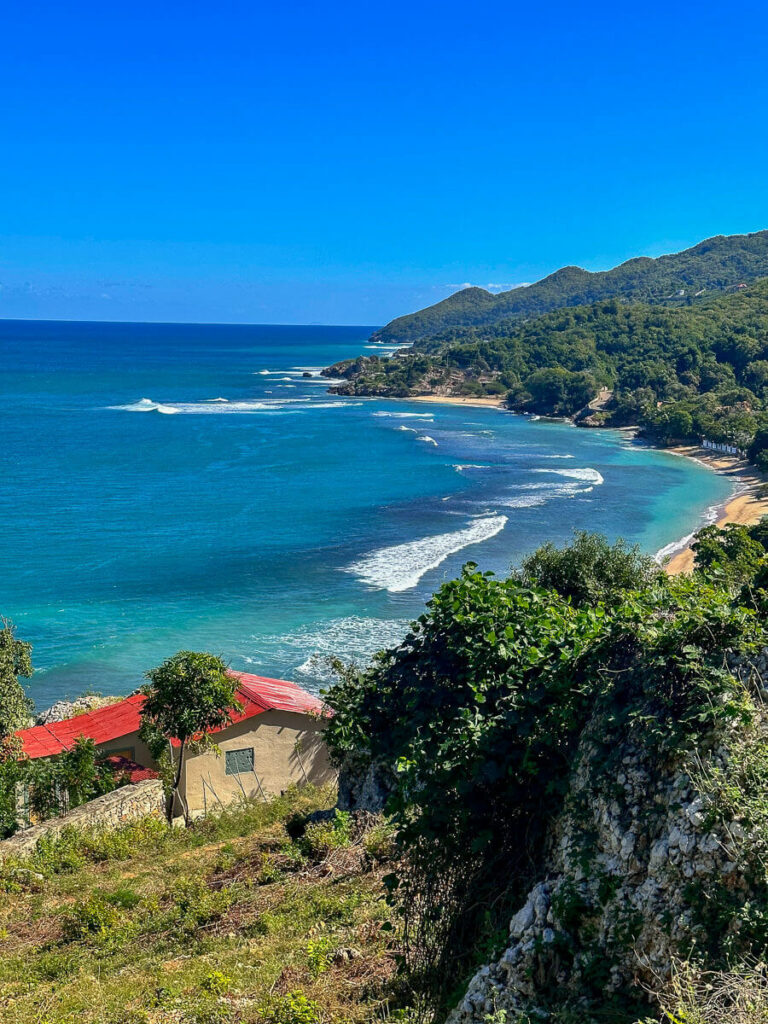
How to visit Labadee
The 10km hike that follows the coast from Cap-Haïtien to Labadee is an excellent day trip, and one of the best things to do in Haiti.
By the way, you can also get there by motorbike taxi, but you’ll be missing a lot of things on the way.
To hike to Labadee, you’ll first have to climb a hill through a slum, so there are no marked streets either, and it’s easy to get lost. In my experience, however, locals were pretty helpful in pointing me in the right direction.
You need to start climbing somewhere around here.
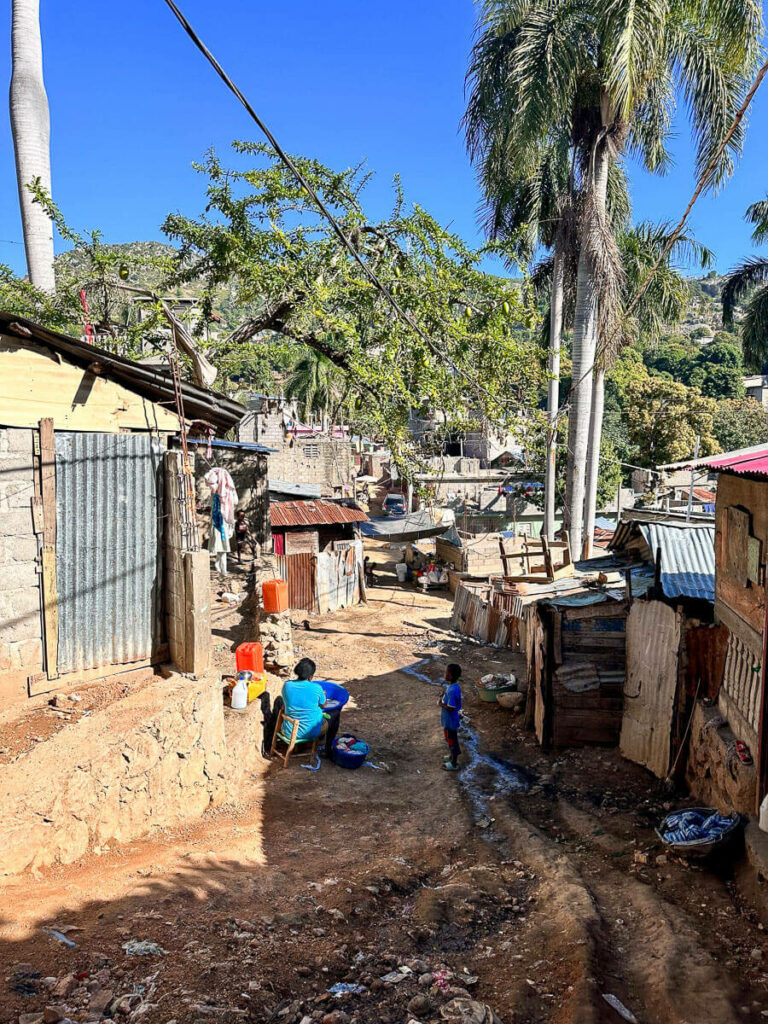
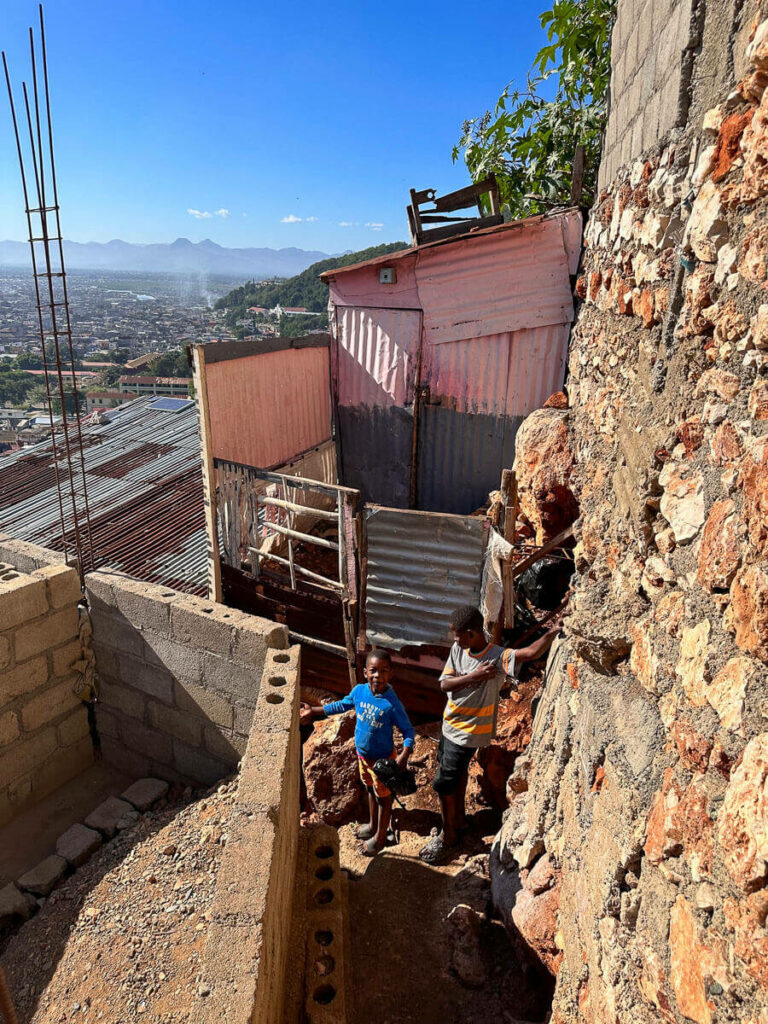
Once you leave the slum, you’ll get to the main road, and then you just need to follow the trail.
Things to do in Labadee
As mentioned, Labadee is a small settlement. There’s a small centre, the commercial area where locals gather and you can get a drink.
From there, local boats depart to different beaches and settlements in the peninsula. A one-way ride costs the equivalent of 1 or 2 USD.
I took the boat to a beach named Belly Beach. There’s a bar here, where you can order drinks and seafood. It wasn’t busy when I was there, and everyone was either wealthy Haitians or crew members from the cruise ship.
Day 5 – Travel from Cap-Haïtien to Port au Prince
I recommend visiting Port-au-Prince only if you have a good local contact, otherwise, I think it’s too dangerous to go.
Everyone in Cap-Haïtien will think that you are crazy wanting to travel to Port-au-Prince.
Maybe they’re right, I don’t know.
They will even say it’s not possible to travel there by land, declaring that road access into the capital is controlled by the gangs.
I actually believed them, so I decided to flew in instead.
Domestic flights are run by a local airline called Sunrise Airways, and the Cap-Haïtien – Port-au-Prince route is a short 30-minute flight.
However, it was after booking my ticket that I learn from my local contact in Port-au-Prince that buses do run regularly between the major cities, although they take a different route.
In any case, remember that the bus journey takes around 9 hours.
Day 6 – Port-au-Prince
Remember that there is basically a civil war going on in Port-au-Prince. Some places like Pétionville are safe but to go further afield, you must go with someone who knows their way.
The capital of Haiti is one of the most chaotic cities I’ve ever been. It is said that the city’s infrastructure can only accommodate a quarter of its total population, and what existing infrastructure there is isn’t great either, built in a city that has been crumbling since the earthquake in 2010.
Port-au-Prince is dusty and extremely noisy, with piles of rubbish and extreme poverty filling all the streets.
To be completely honest, this isn’t a destination for most travelers although Against the Compass readers may find a certain appeal in its chaos, art scene and particular nightlife.
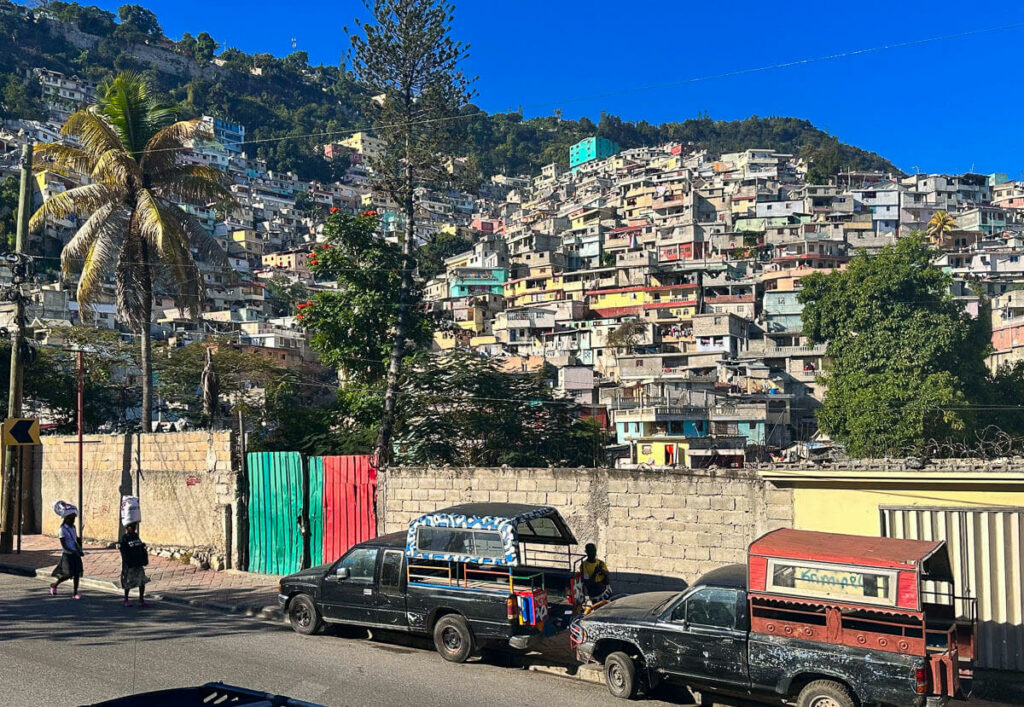
Port-au-Prince is an unmissable place to see in Haiti, and it’s sure not to disappoint you.
By the way, when visiting Port-au-Prince, you must stay only in Pétionville, the safest area in the city, and the only place where you can walk around freely. A good place to stay is Allamanda Hotel.
Things to do in Port-au-Prince
Pétionville: Originally a residential suburb in the mountains, Pétionville flourished after the 2010 earthquake, becoming the most prominent neighbourhood in Port-au-Prince, housing the best restaurants and hotels. This is a safe area to walk around, and one where you can enjoy a lively market, a beautiful street where they sell pieces of local art, and numerous bars and restaurants.
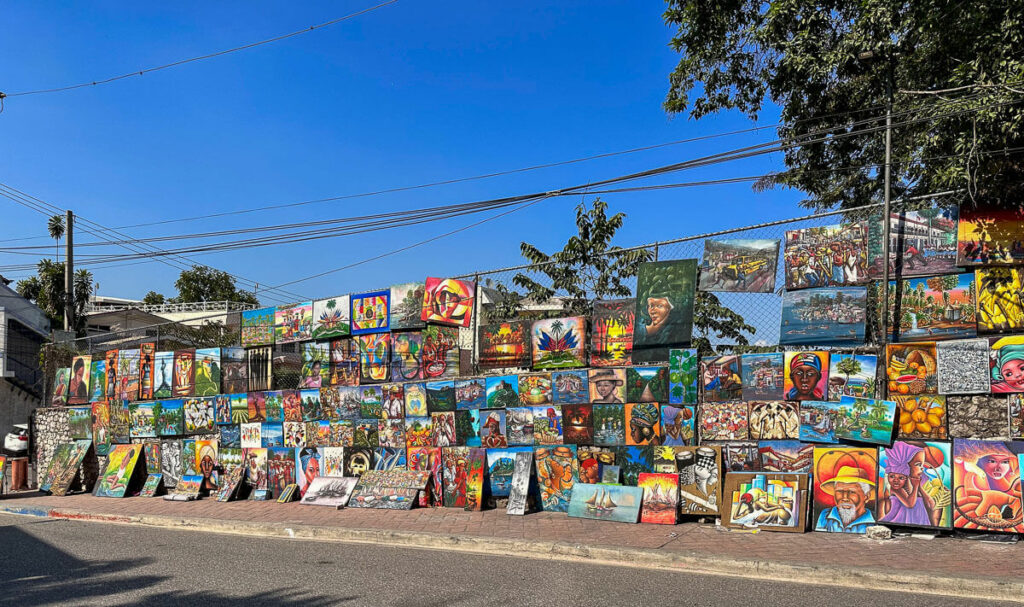
Atis Rezistants: A workshop where they create art out of trash, mainly Haitian Vodou-related pieces. This was one of the most interesting places to visit in Haiti.
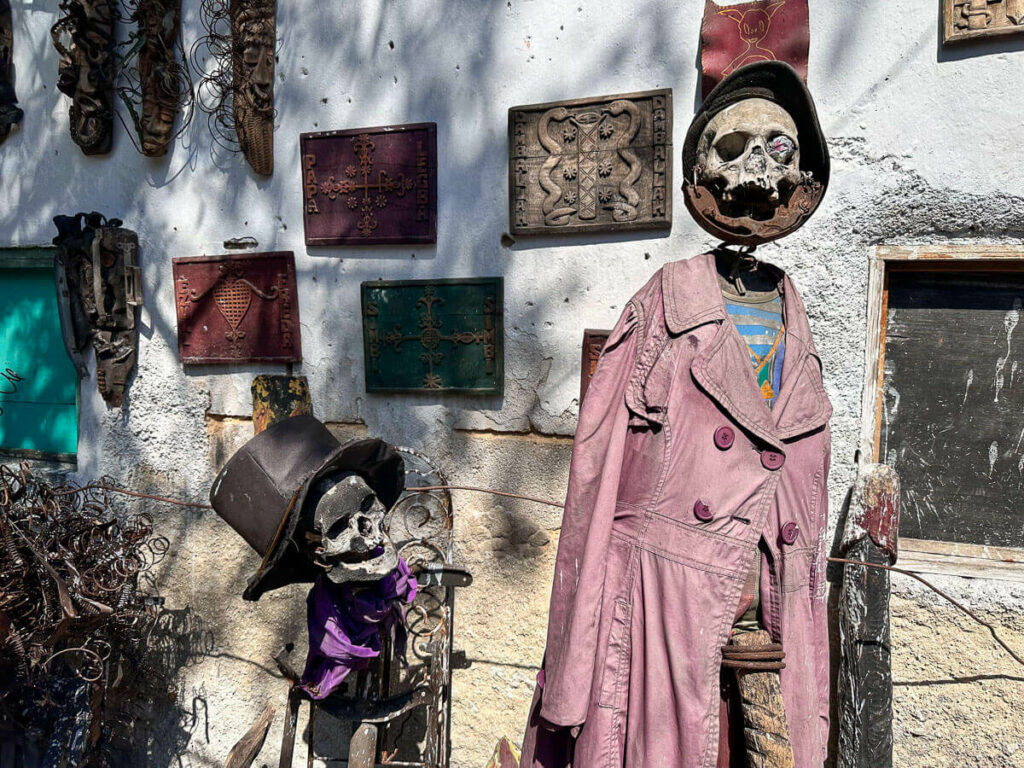
The National Pantheon Museum: Among other things, this museum features the anchor from Santa Maria, the largest boat used during Christopher Columbus’ expedition to the New World, back in 1492. Remember that the first place there ever set foot on was in today’s Haiti.
Check our travel guide for more information.
Cité Soleil: The poorest slum in all of the Americas and one of the largest in the world.
How to visit Cité Soleil
The most infamous place to visit in Haiti is Cité Soleil.
Cité Soleil is perhaps the most dangerous place in the Americas, and far more dangerous that infamous destinations such as Syria, Yemen or Afghanistan. The reason is that today, Cité Soleil is a battlefield for gangs trying to kill each other on an almost daily basis.
Despite the current situation, however, I did visit Cité Soleil with the help of a local fixer who personally knows the gangs controlling the area, and I actually had the chance to meet the sub-chief of G-PEP.
They showed me around the slum, we had a few beers with some gang members then left after 2 hours.


2 things I want to highlight:
Firstly, that I’ve never felt so intimated in my life as, the time I visited Cité Soleil. Upon arriving at the main gang checkpoint to enter the slum, a group of extremely young Haitians came running towards us, but as soon as they saw our fixer, they all calmed down.
It’s important to highlight that unlike checkpoints in Iraq for example, these Haitians do actually use their guns every other day.
Second, kindly note that I won’t be sharing my fixer’s contact details as I don’t want Cité Soleil to become a playground for backpackers since eventually, someone will get shot and I really don’t want to be involved. Street shootings do occur every every day and stray bullets are a thing.
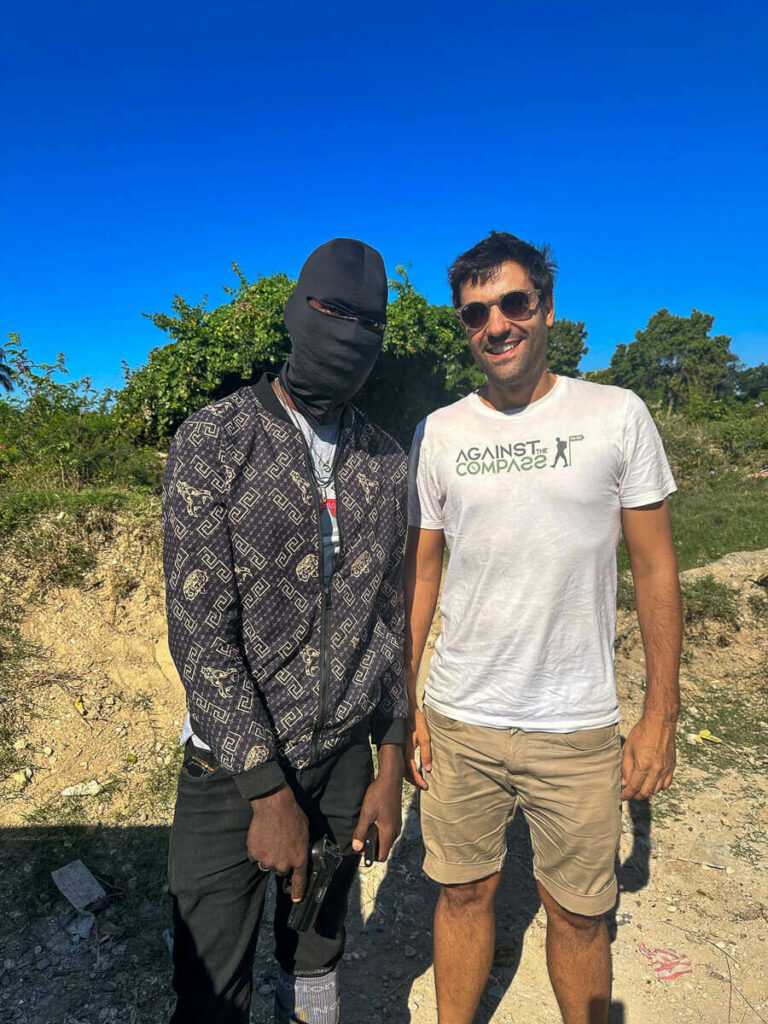
Day 7 – Mirelabais and Dominican Republic
Unless you wish to keep exploring Haiti beyond what is included in this Haiti travel itinerary, on day 7 of the tour, I recommend going back to Dominican Republic.
However, instead of getting a direct bus to Santo Domingo, I recommend doing it the backpacking way through Mirebalais and the Belladères border, so you can to see another, more rural side to the country.
Step 1: Get a bus to Mirelabais.
Buses run all day long, starting early in the morning. The station is located here.
Step 2: Get on a tap tap to Lascahobas.
You can find a taxi to take you to the border, but we couldn’t find a public tap tap.
Step 3: Get a final tap tap to the actual border.
No secrets, you’ll easily find the necessary transportation.
Step 4: Cross the border on foot.
On the Haitian side, you don’t have to pay any exit fees but on the Dominican side, a fee of 10 USD applies. I found this border to be very corrupt, so make sure you pay at the official stall, and get an actual receipt. The police may ask for it later.
Step 5: Bus from Elias Pina to Santo Domingo.
Elias Pina is a 20-minute walk from the border, maybe a bit more. There’s not much to see in this town, but it has a lively market and a very local feel. It’s easy to find transportation to Santo Domingo but you might want to spend the night here, or travel somewhere else instead. One piece of advice, however: I took the last bus to Santo Domingo, departing at 6pm. The ride was long and they dropped me off in the middle of the night at a very, very sketchy area of Santo Domingo, where muggings are not uncommon.
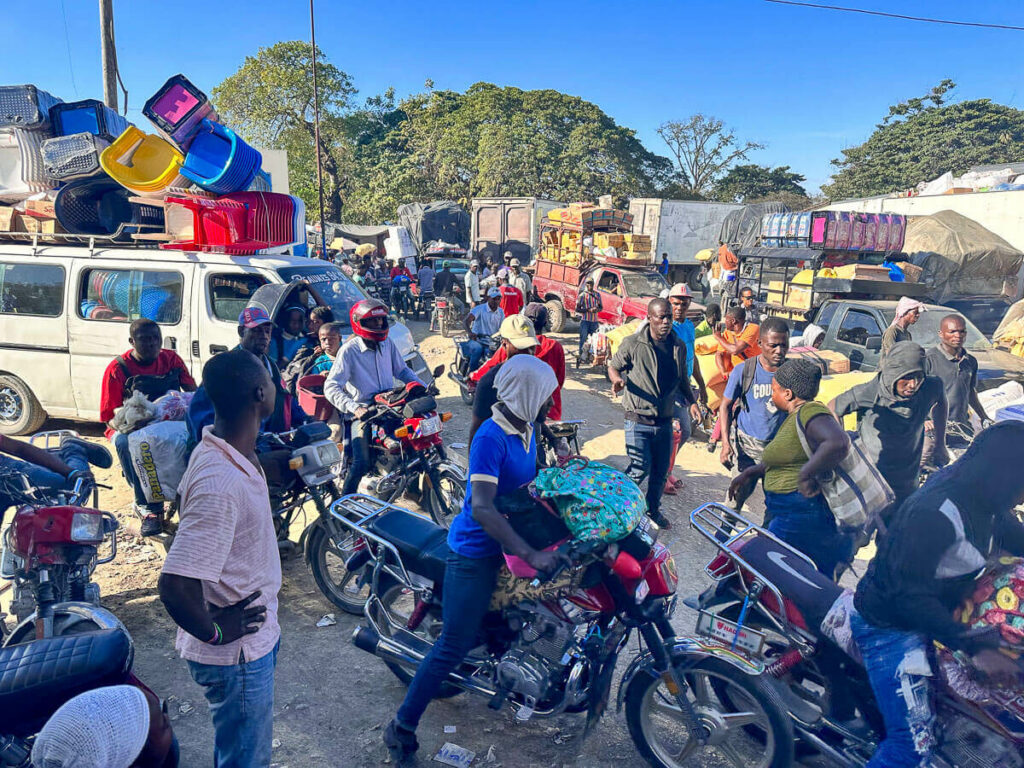
❗More information
📢 In my Travel Resources Page you can find the list of all the sites and services I use to book hotels, tours, travel insurance and more.
All guides and articles for traveling in Haiti destination
Check travel tips to the following offbeat countries:
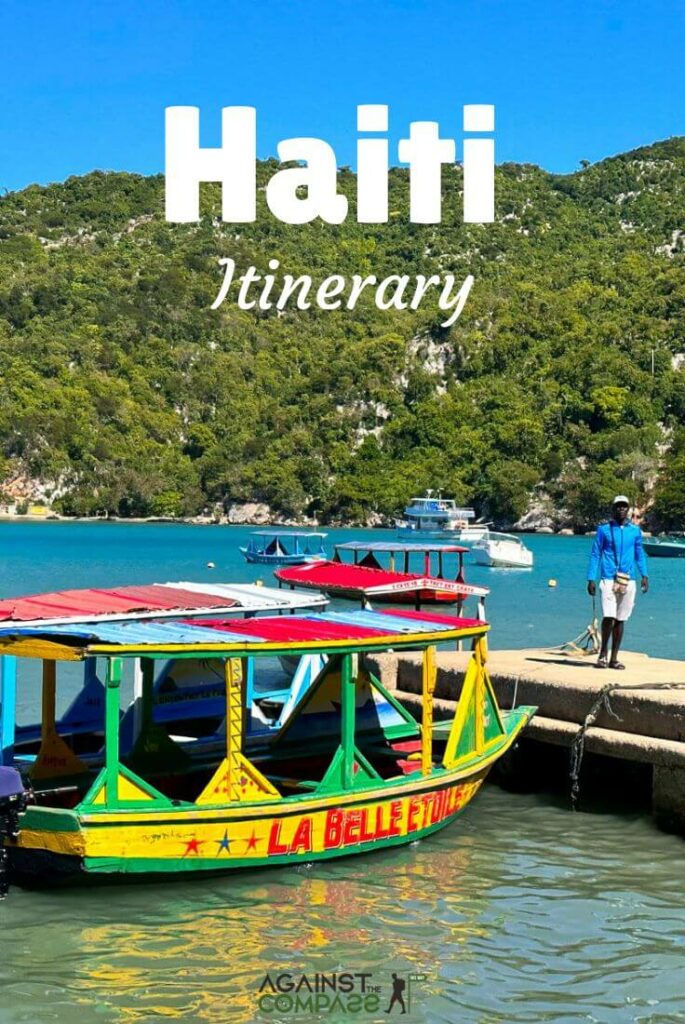
Leave a Comment